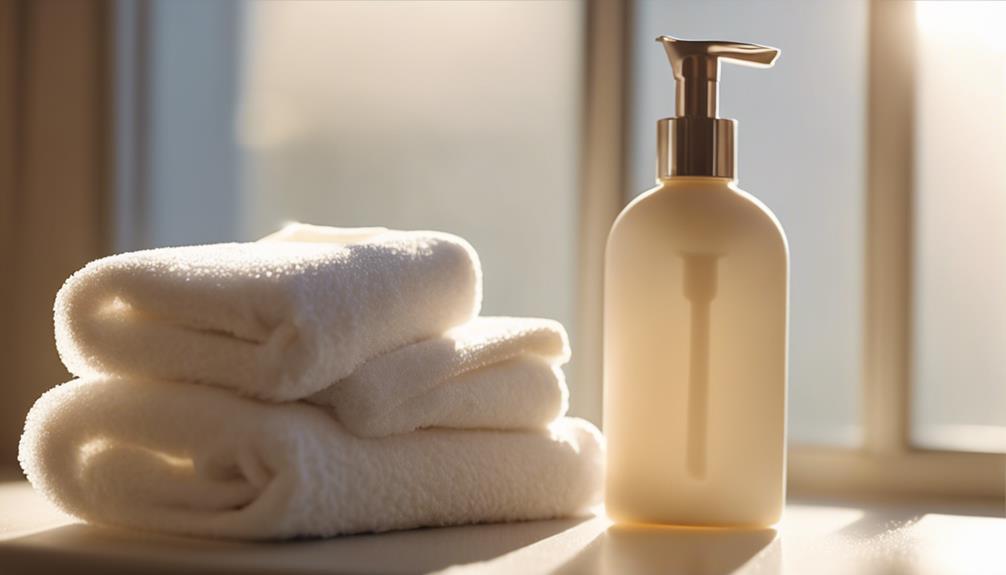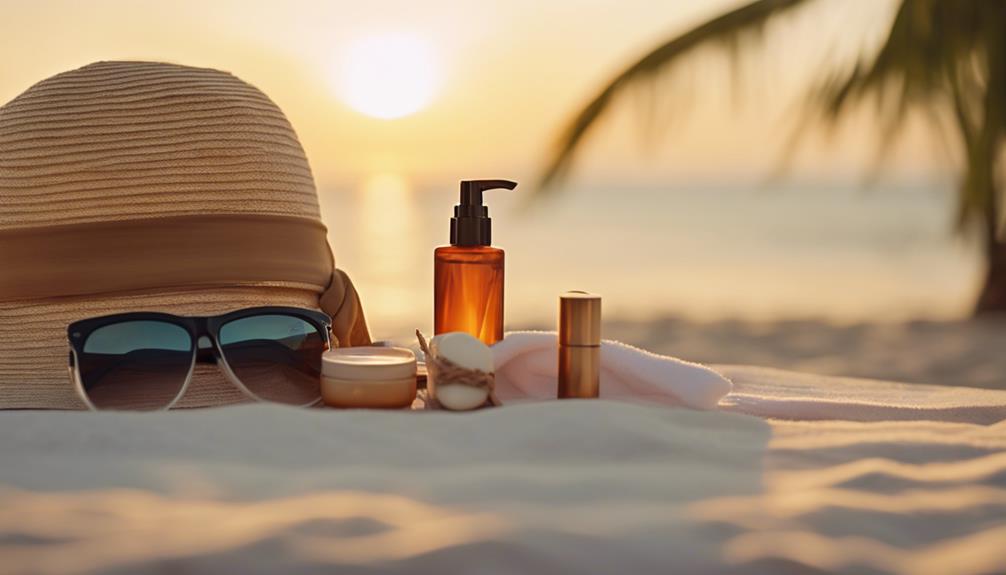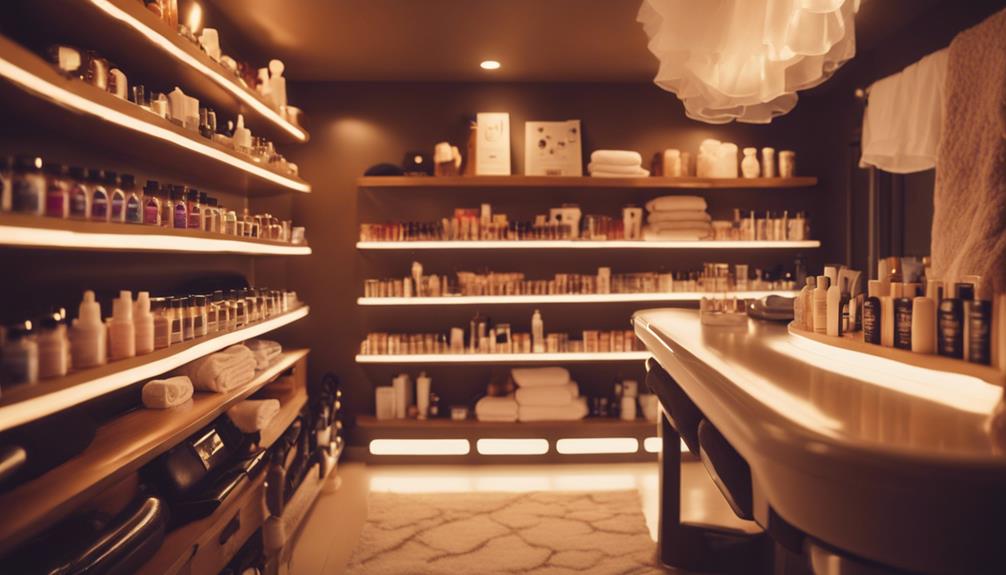When starting with tanning beds, make sure you evaluate your skin sensitivity first. Different skin types require varying initial tanning times, so consult the salon staff for advice. Always exfoliate before sessions and opt for appropriate tanning lotions to enhance results. Begin with shorter sessions around 5-8 minutes, gradually increasing the time while monitoring for any redness. Don't forget to wear protective goggles to shield your eyes. After tanning, moisturize your skin and shower with cool water. Stay hydrated, and remember, you can uncover more tips to perfect your tanning routine and keep your skin healthy.
Key Takeaways
- Assess your skin type to determine appropriate tanning duration and prevent burns during sessions.
- Always exfoliate and cleanse your skin before tanning to achieve an even and long-lasting tan.
- Start with short sessions of 5-8 minutes, gradually increasing time as your skin acclimates.
- Use protective goggles to shield your eyes from harmful UV exposure during tanning sessions.
Tanning Bed Safety Guidelines
When using a tanning bed, prioritize your skin's safety by evaluating your sensitivity to UV rays before starting any sessions. It's vital to understand your skin type to avoid burns and achieve an even tan.
Always consult with salon staff for tailored advice on safe tanning practices. Protective goggles are a must; they shield your eyes from harmful UV exposure, so don't skip this step.
Regular skin checks post-tanning are essential to catch any unusual changes early. Keep in mind that overexposure can lead to long-term damage, so adhere to recommended session limits and avoid makeup or lotions that block UV rays.
Assessing Skin Sensitivity
Understanding your skin sensitivity is key to tailoring your tanning experience and avoiding adverse reactions to UV exposure. To assess your sensitivity, consider your skin type and past reactions to sun exposure. Use the table below to identify your skin type and determine your initial tanning strategies.
| Skin Type | Sensitivity Level | Initial Tanning Time |
|---|---|---|
| Fair | High | 5-8 minutes |
| Medium | Moderate | 8-10 minutes |
| Olive/Dark | Low | 10-15 minutes |
| Very Dark | Minimal | 15-20 minutes |
Always consult salon staff for personalized advice and adjust your tanning sessions based on how your skin reacts. This approach helps guarantee a safer tanning experience.
Pre-Tanning Skin Preparation

Preparing your skin properly before a tanning session is essential for achieving an even, long-lasting tan.
Start by exfoliating your skin to remove dead cells, which helps guarantee uniform color. Use a gentle scrub or exfoliating mitt in the shower, focusing on areas prone to dryness, like elbows and knees.
After exfoliation, make certain your skin is clean and free of any makeup or lotions that might block UV rays. This allows for better absorption of the tanning bed's rays.
Apply a pre-tan moisturizer suited to your skin type to keep your skin hydrated.
Finally, have your protective eyewear ready to safeguard your eyes during tanning.
Following these steps will set you up for a successful tanning experience.
Choosing Tanning Lotions
Choosing the right tanning lotion is essential for enhancing your tanning experience and achieving the best results for your skin type. Here are some tips to guide you in selecting the perfect lotion:
- Fair Skin: Opt for a Moisturizing Accelerator to boost hydration.
- Medium Skin: Use a Double White Bronzer for a deeper, richer tan.
- Dark Skin: Consider a Tingle Lotion for intense tanning effects.
- Ingredients: Look for lotions with nourishing elements like aloe vera or vitamin E.
Session Duration Recommendations

Start your tanning journey with short sessions, especially if you have sensitive skin, to allow your body to adjust to UV exposure.
Begin with 5 to 8 minutes in a Level One tanning bed. Gradually increase your session time each week, but always stick to the 48-hour rule between sessions to give your skin time to recover.
If you notice any redness or discomfort, reduce your tanning time or take a break. Remember to flip during sessions for even tanning results.
Consistently monitor how your skin reacts and adjust your timing accordingly. This way, you can build a tan while minimizing the risk of burns and ensuring a safe tanning experience.
Post-Tanning Care Tips
After tanning, it's vital to moisturize your skin to lock in hydration and prolong the life of your tan. Here are some essential post-tanning care tips to follow:
Use a gentle moisturizer: Look for products that hydrate without harsh chemicals.
Shower with cool water: Hot showers can strip moisture and fade your tan.
Avoid exfoliation immediately: Give your skin time to settle before resuming scrubs.
Apply sunscreen daily: Protect your skin from UV damage to maintain tan longevity.
Stay hydrated: Drink plenty of water to keep your skin supple and vibrant.
Following these tips will help you enjoy a beautiful, lasting tan while keeping your skin healthy!
Exploring Tanning Alternatives

Considering healthier options, many people are turning to tanning alternatives that provide a sun-kissed glow without the risks associated with tanning beds. These methods can give you a beautiful tan while keeping your skin safe. Here are some popular alternatives:
| Method | Pros | Cons |
|---|---|---|
| Self-Tanners | Easy to apply, quick results | Can streak if applied unevenly |
| Spray Tans | Instant color, customizable | May fade quickly, can be expensive |
| Natural Oils | Nourishing for skin | Takes longer to develop color |
Frequently Asked Questions
Can I Use Tanning Beds if I Have Tattoos?
Yes, you can use tanning beds with tattoos, but be cautious. Protect your tattoos with sunscreen or a barrier to prevent fading. Always consult a professional to guarantee your skin remains healthy during tanning sessions.
How Often Should I Tan for the Best Results?
To achieve that sun-kissed glow, start with 1-3 sessions a week. Let your skin breathe for 48 hours between visits, gradually increasing time while monitoring your skin's response. Balance is key for stunning results!
What Should I Wear During a Tanning Session?
During a tanning session, you should wear minimal clothing to avoid tan lines. Consider a swimsuit or specific tanning attire. Don't forget protective goggles to shield your eyes from UV rays throughout the process.
Are There Age Restrictions for Using Tanning Beds?
Yes, most tanning salons have age restrictions for tanning bed use, typically requiring users to be at least 18. Always check local regulations and salon policies to verify you're compliant before starting your tanning sessions.
How Do I Clean Tanning Bed Equipment Safely?
To clean tanning bed equipment safely, you should use a gentle disinfectant specifically designed for tanning beds. Wipe down surfaces thoroughly, focusing on high-touch areas, and allow everything to dry completely before the next use.
Conclusion
In your quest for that perfect tan, remember that safety should always come first.
By following these essential tips, you're not just chasing a sun-kissed glow; you're also safeguarding your skin from potential harm.
Think of it as laying a solid foundation before building your dream house.
With the right preparation and care, you can enjoy a beautiful tan while keeping your skin healthy.
So, take these guidelines to heart and step into the tanning world with confidence!










